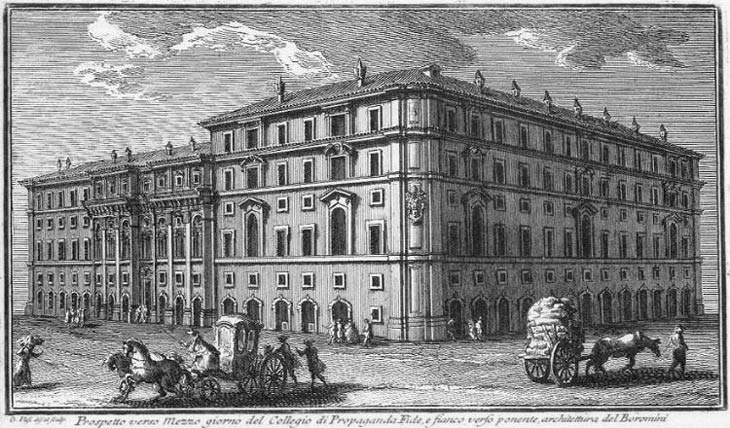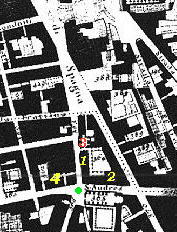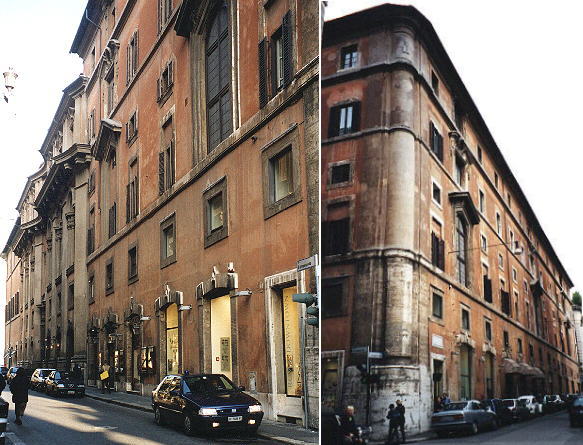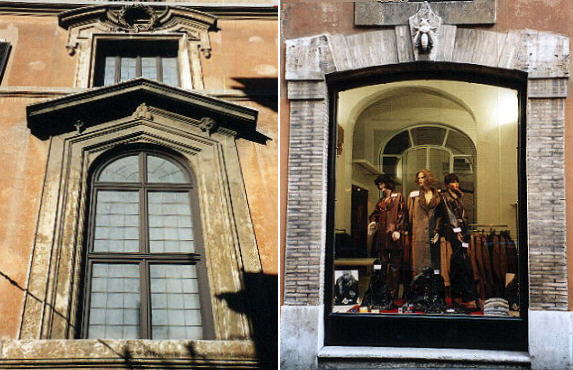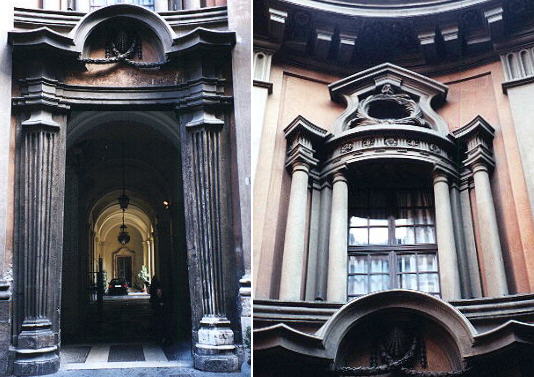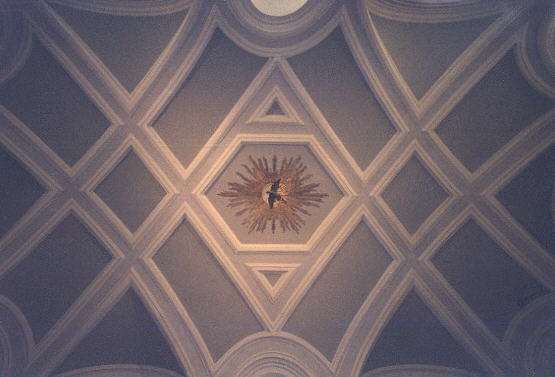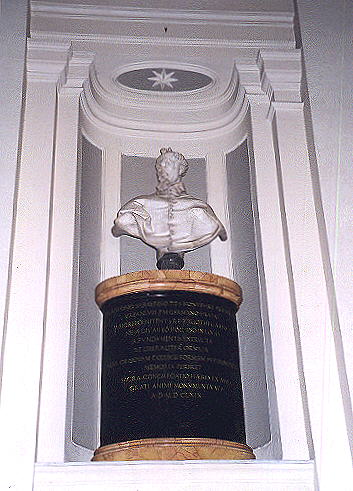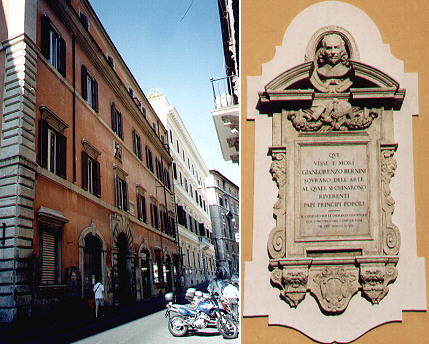  Collegio di Propaganda Fide (Book 9) (Map B2) (Day 3) (View C6) (Rione Colonna) In this page:
The College was founded by Urbanus VIII for the training of missionaries.
The main fašade by Bernini is in Piazza
di Spagna. Vasi shows the south side with the fašade by
Borromini built under Alexander VII, whose gigantic coat of arms you can
see on the corner. The west side is also shown in plate
146. The view is taken from the green dot in the 1748 map below.
The map shows also 1) Fašade by Francesco Borromini; 2) West side of the building; 3) Cappella dei re Magi; 4) House of Gian Lorenzo Bernini.
The palace is still devoted to its original purpose, but the ground floor has been converted to shopping. The coat of arms of Alexander VII is lost, but his symbols are still on the first floor large windows, whilst the bee of Urbanus VIII tops the shop windows.
The ingenuity of Borromini and his typical way of combining curve lines can be fully appreciated in the details of the entrance to the Palace.
Bernini had built for Urbanus VIII a little chapel inside the palace. With the death of the Pope the fortunes of Bernini fell and Borromini was asked to pull down the chapel and build a new one which was completed under Alexander VII (see his coat of arms at the entrance of the chapel). As Bernini lived opposite to Palazzo di Propaganda Fide he had to endure seeing his work cancelled by his rival. It's a pity we lost the elliptical chapel of Bernini (which inspired his later work in S. Andrea al Quirinale), but Borromini's chapel does compensate for it. At first sight everything seems so neat and simple, but this result is achieved in a very sophisticated way. Six busts represent cardinals who protected the missions (below the bust of Cardinal Antonio Barberini): the statues are generally ascribed to pupils of Alessandro Algardi, but the tall black bases were designed by Borromini.
Pietro Bernini, the father of Gian Lorenzo, moved to Rome in 1606 and settled in a
house opposite to S. Maria Maggiore where his son continued to live
for many years, although at that time S. Maria Maggiore was a rather remote location. The favour of Urbanus VIII who commissioned to
Bernini palaces, churches and the decoration of St Peter's, made Gian Lorenzo Bernini a very wealthy man and led him to move to a more central location.
In 1642 he bought two buildings in Via della Mercede: in one (the reddish one in the picture) he established his residence and his workshop, while the other one was rented. Bernini lived
in this house until his death in 1680. He left a fortune and his heirs later on moved to a more sought after building in Via del Corso opposite to Palazzo Ruspoli and which is known as
Palazzo Bernini. The late XIXth century inscription makes reference to the fact that popes and princes knelt to him. Bernini had a very likeable
personality and to use today's words he had great marketing skills, nevertheless he was conscious of the autonomous value of art and of his own value as an artist.
When Queen Christina of Sweden visited him he met her in his workshop, still dressed in his work clothes, by this indicating that his activity as an artist took precedence over the rules of protocol.
Next plate in Book 9: Seminario Romano Next step in Day 3 itinerary: Convento di S. Giuseppe Next step in your tour of Rione Colonna: Convento di S. Giuseppe
Go
to |
All images © 1999 - 2003 by Roberto Piperno. Write to romapip@quipo.it
